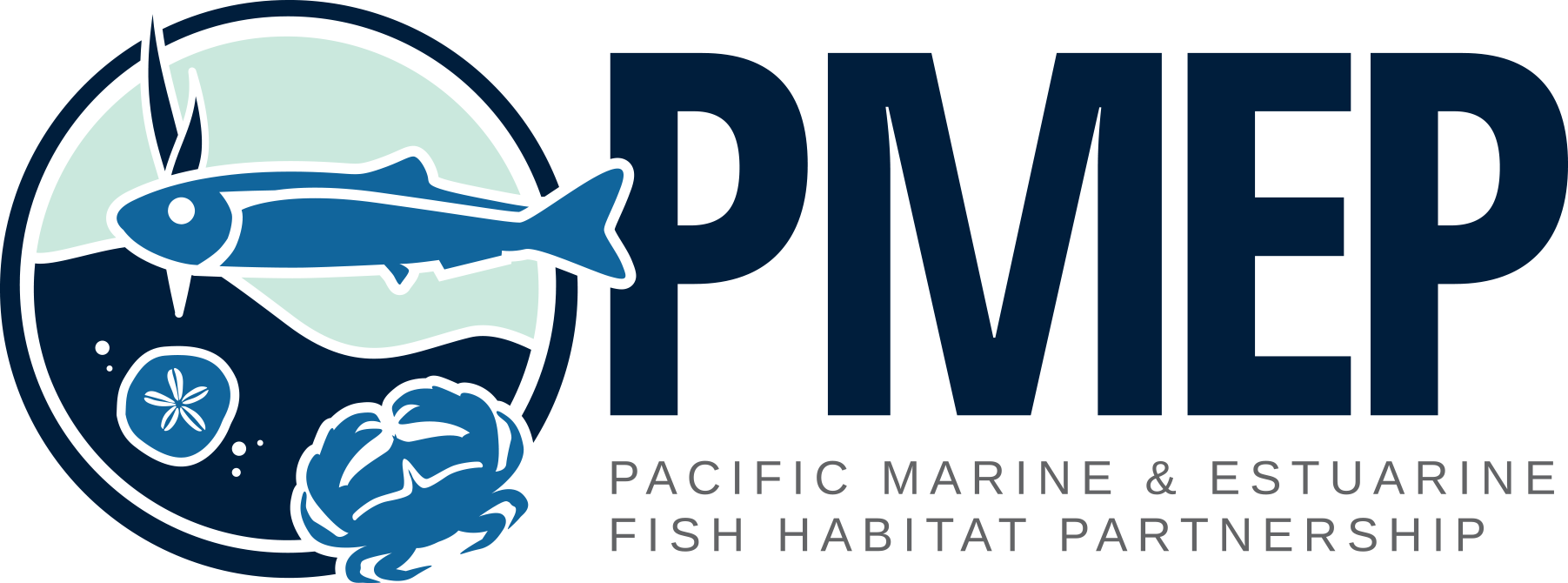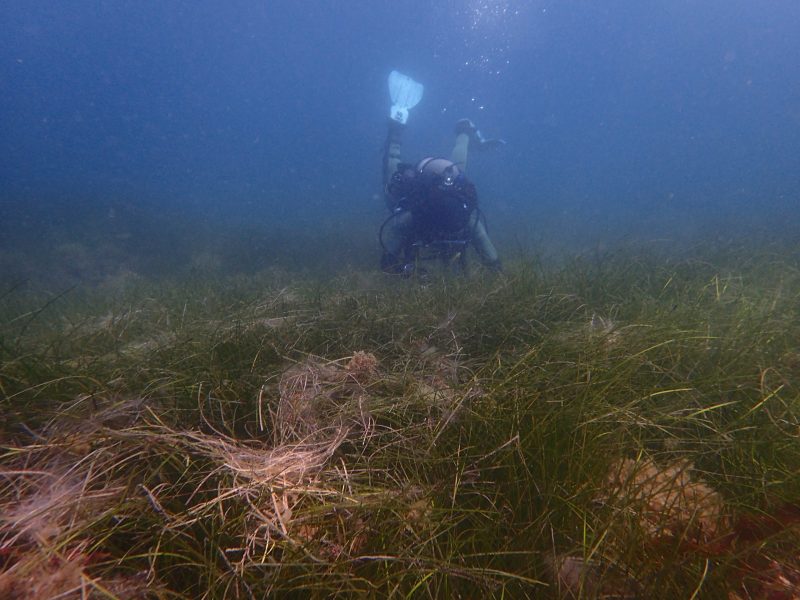
- July 1, 2025
- Joan Drinkwin
- Announcement, Funding
- 0 comments
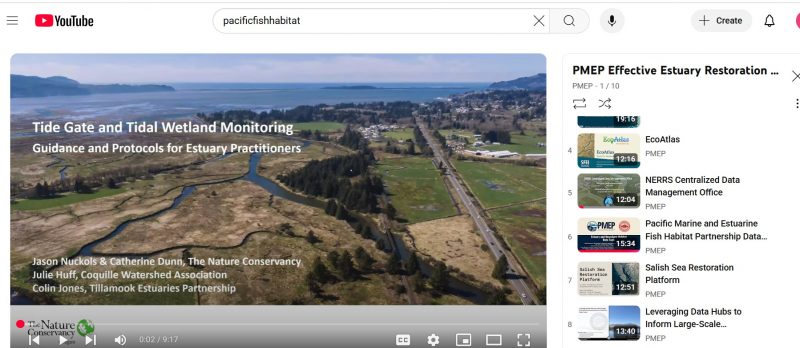
- May 28, 2025
- Joan Drinkwin
- Announcement, Symposium Presentation
- 0 comments
Presentations and recordings are available from our Promoting Effective Estuary Restoration May 6 virtual symposium/workshop focusing on Monitoring Guidance, Data Hubs, and Collaborative Platforms. Check them out on the PMEP YouTube channel!
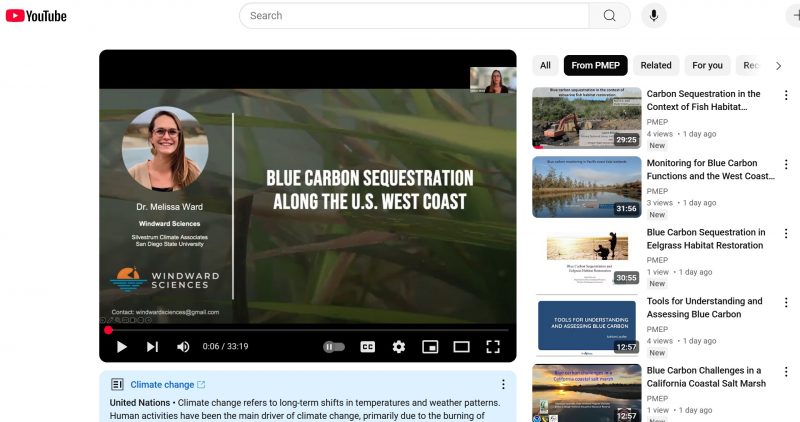
Exciting times for our Promoting Effective Estuary Restoration Project! Registeration is open for the May 6 virtual symposium/workshop focusing on Monitoring Guidance, Data Hubs, and Collaborative Platforms. And presentations and recordings from our March 4 Symposium on Blue Carbon and Estuary Restoration are now available. Check out May 6 speaker profiles and registration link and find presentations from March 4 and earlier events on the project page HERE:
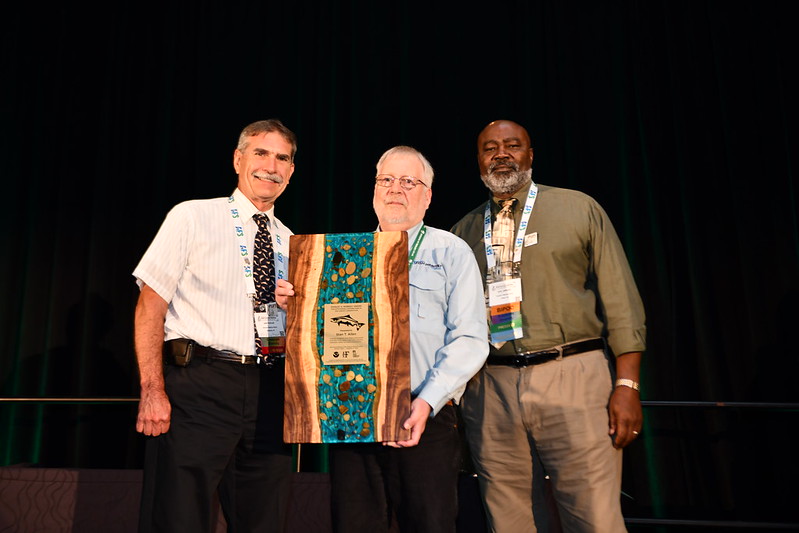
- December 20, 2024
- Joan Drinkwin
- Announcement
- 0 comments
Our own Stan Allen, Pacific Marine Fisheries Commission, was awarded the Stanley A. Moberly Award for Outstanding Contributions in Fish Habitat Conservation at the 2024 American Fisheries Society meeting in Honolulu, Hawai’i. The award was established in 2019 to annually recognize efforts of individuals, groups, or projects with an outstanding, long-term record of success in research, management, policy, communications, education, or other fields that support fish habitat conservation.
Stan has had a long and distinguished career in fisheries starting with Idaho Department of Fish and Game in 1980 as a Biological Aid and working up to the Information Resource Data Manager, where he was responsible for building a consistent and verifiable river database. This work resulted in the protection of over 40,000 miles of streams in the Columbia River Basin from additional hydropower development. Stan has worked at the Pacific States Marine Fisheries Commission since the 1990’s and has been a Senior Program Manager for 31+ years. His work has included the development of the CalFish system to support habitat efforts for anadromous fish and development of StreamNet, a cooperative data effort that has been the foundation for the support of fish conservation in the Pacific Northwest. He has also managed countless fisheries projects, currently including 80 projects with 150-175 employees, such as the reintroduction of salmonids in California Central Valley tributaries, the Klamath River watershed rehabilitation, and Pacific Coast, in particular in California, fish passage barrier identification, removal, and mitigation. He is a long-time National Fish Habitat (NFHP) Board member and now is the Vice Chair of the Board, ensuring NFHP continues its incredible fish habitat conservation work. Stan has been an active member of PMEP committees since PMEP was initally formed as a fish habitat partnership in 2012.
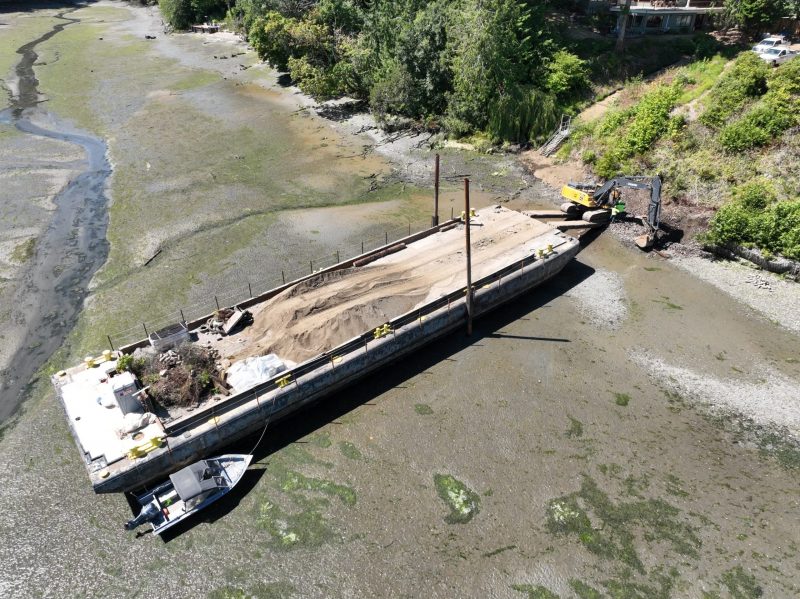
- December 3, 2024
- Joan Drinkwin
- Announcement
- 0 comments
The PMEP-funded project, Zangle Cove Bulkhead Removal, was named a National Fish Habitat Partnership 2024 Waters to Watch Project. Managed by the Thurston Conservation Districti, this project removed 200 linear foot of bulkhead along the marine shoreline of South Puget Sound. The project restored spawning habitat for beach spawning fish (e.g., surf smelt and sand lance), restored shoreline sediment transport processes, and restored shoreline riparian vegetation providing multi-species benefits. The project was implemented on private residential waterfront property near Olympia, Washington. It is an important example of regional work underway to reduce harm from hard armoring on private waterfront property throughout Puget Sound. Numerous organizations are operating under the umbrella of the Shore Friendly program, supported by the Washington Department of Fish and Wildlife Estuary and Salmon Restoration Program and other partners. The Shore Friendly program is a multi-organizational effort that aims to motivate residents living on marine shorelines to remove bulkheads and preserve natural shorelines, in order to support recovery of Puget Sound’s salmon and orca populations (among other species). Shore Friendly promotes a shoreline stewardship ethic that embraces natural coastal processes that support nearshore ecology.
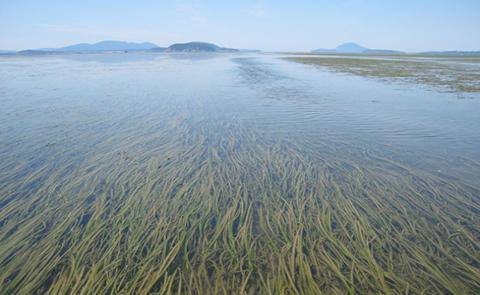
- October 6, 2024
- Joan Drinkwin
- Announcement, Funding
- 0 comments
Deadline for proposal submission is December 2, 2024.
PMEP will award an estimated $250,000-$350,000 in FY2026 for projects that advance its mission. The exact amount of funding available varies annually and is not known at this time. In an effort to fund a diverse portfolio of projects, strong project proposals that request less than $100,000 are preferred. However, proposals of particular merit may be funded at a higher level, at PMEP’s discretion.
PMEP is seeking project proposals that restore, enhance, and protect habitats for fish within estuarine and nearshore marine systems or that increase understanding of fish habitats in estuarine and nearshore habitats along the U.S. West Coast (Washington, Oregon, and California).
For nearshore-focused projects, priority will be given to assessment and restoration projects that address critical challenges to nearshore marine habitats, with a focus on habitats such as kelp forests, seagrass, rocky reefs, biogenic structure (native oysters, sand dollar beds, tube worm reefs), and intertidal and beach spawning habitat. Projects must also clearly identify benefit to fish species.
For estuary-focused projects, priority will be given to projects benefiting smaller estuarine systems defined as having an Estuary Size Class of 0-250 acres in the PMEP Estuary Explorer data tool http://estuaries.pacificfishhabitat.org/explore. However, worthy projects that benefit larger estuarine or nearshore systems will still be considered. Estuary projects must demonstrate benefits to PMEP focal species.
Find the full Request for Proposals and application instructions HERE.
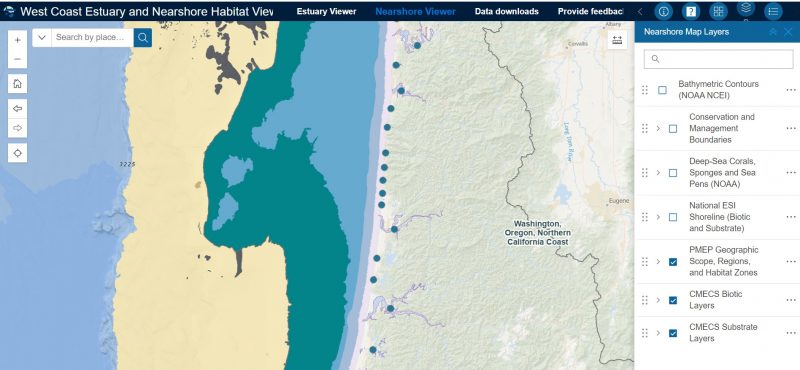
PMEP’s new West Coast Estuary and Nearshore Habitat Viewer is available now. Launched at the recent American Fisheries Society meeting, this new interactive tool combines our estuary datasets with our new nearshore habitat datasets into one easy-to-use platform. The Viewer supports users importing their own spatial data as well as data readily available at ArcGIS Online. Combine these with the PMEP data layers to compare, overlay, and synthesize information to support resource management, habitat conservation and restoration goal setting. PMEP data layers are also available for download. Find the Viewer and PMEP data HERE.
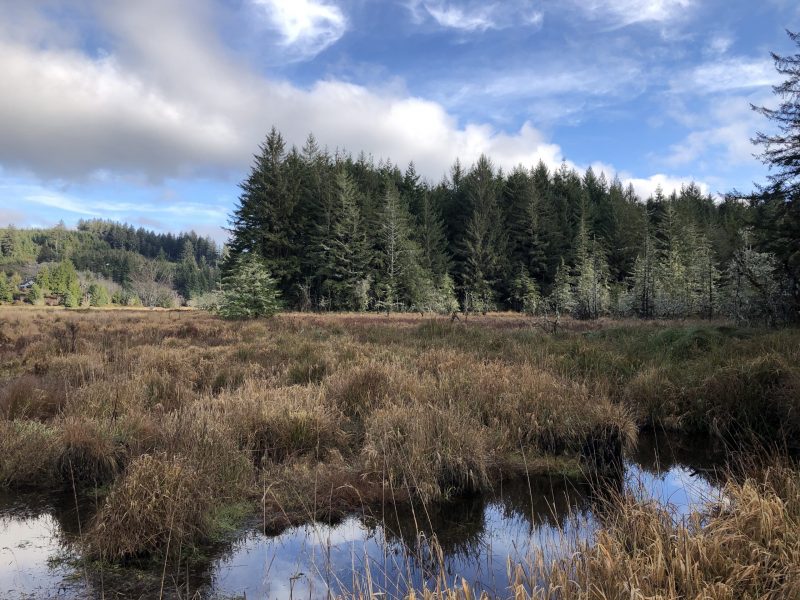
- July 30, 2024
- Joan Drinkwin
- Announcement, Funding
- 0 comments
PMEP is thrilled to provide FY24 National Fish Habitat Partnership funding to the Midcoast Watersheds Council to complete the design of its Bayview Oxbow Tidal Restoration in Alsea Bay, Oregon. When constructed this project will restore tidal conditions to one half of an old oxbow of the Alsea River, restoring about 34% of the tidal wetlands that have been lost. It is one of the largest (75 acre) remaining restoration sites on the Alsea.
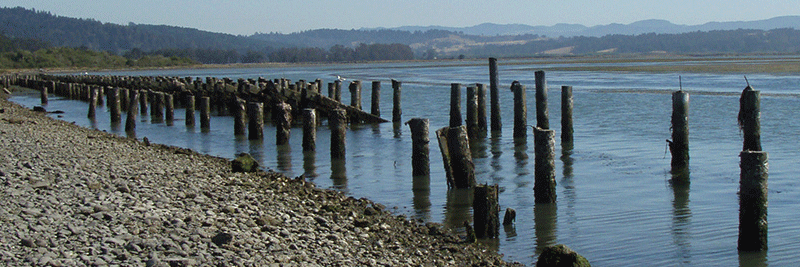
- October 8, 2023
- Joan Drinkwin
- Announcement, Funding
- 0 comments
The Pacific Marine and Estuarine Fish Habitat Partnership (PMEP) requests proposals for projects that restore, enhance, or protect estuarine and nearshore marine fish habitat conservation and restoration along the West Coast. Restoration, acquisition, and assessment projects are eligible. PMEP will award an estimated $250,000-$350,000 in FY2025 for projects that advance its mission. In an effort to fund a diverse portfolio of projects, strong project proposals that request less than $100,000 are preferred. However, proposals of particular merit may be funded at a higher level, at PMEP’s discretion.
The project proposals are due by 5:00PM Friday, December 1, 2023. Project sponsors should assume that funding will be received in Summer of 2025.
Proposals must be submitted online through the Jotform platform.
For more information, access the full Request for Proposals and application instructions HERE
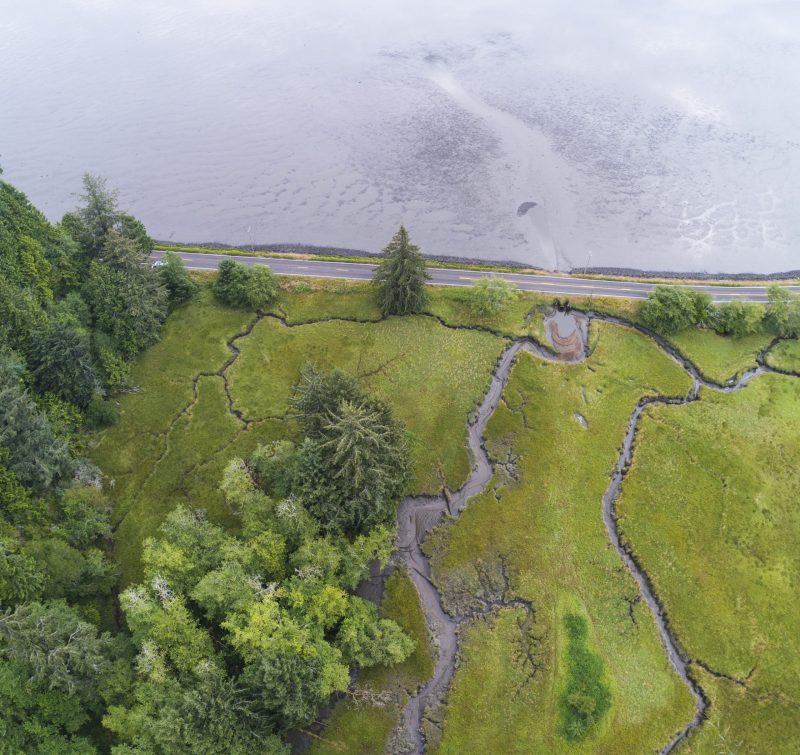
- August 8, 2023
- Joan Drinkwin
- Announcement, Funding
- 0 comments
Flower Pot Creek is a tributary flowing directly into Tillamook Bay. It crosses Bayocean Road, directly before its confluence with Tillamook Bay, at an old, deteriorating, and undersized culvert. This culvert acts as a physical barrier to adequate tidal exchange and a velocity barrier to fish passage during certain flows. Replacing this undersized culvert with a properly sized bridge will increase tidal exchange in the wetland and eliminate a fish barrier. This wetland supports spawning and rearing for Oregon Coast ESU coho salmon, Chinook salmon and steelhead. The Flower Pot Creek Fish Passage and Tidal Reconnection Project, lead by Trout Unlimited, will improve connectivity to approximately 1.4 stream miles and 14.6 acres of tidally influenced wetland. We will replace an undersized, deteriorating culvert with a bridge and streambed simulation. This will correct a fish passage barrier and allow for natural tidal and steam functions to occur. This culvert is highly ranked on the Salmon SuperHwy priority list and the adjacent wetlands are ranked medium-high priority in the Tidal Wetlands Prioritization for Tillamook Bay.
